Forrester’s Top 15 Emerging Technologies To Watch: Now To 2018
The pace of technology-fueled business innovation is accelerating, and enterprise architects can take a leading role by helping their firms identify opportunities for shrewd investment. In our 2012 global state of EA online survey, we asked again what the most disruptive technologies would be; here’s what we found:
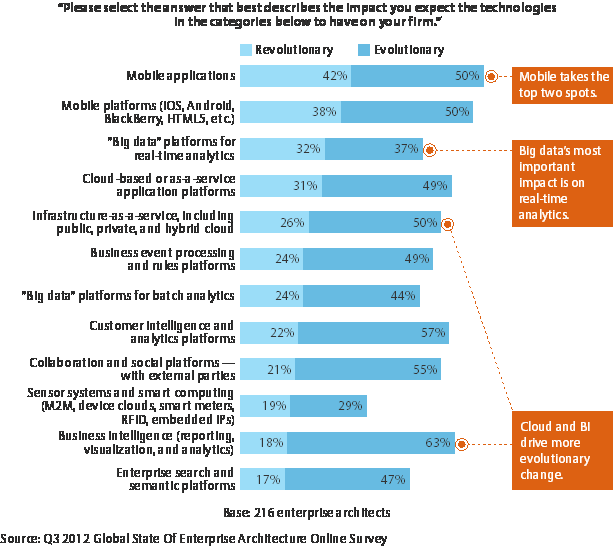
The results shouldn’t surprise anybody; however, if you are only looking at these, you are likely to get smacked in the face when you blink — things are changing that fast. In the near future, new platforms built on today’s hot technologies will create more disruption. For example, by 2016 there will be 760 million tablets in use and almost one-third will be sold to business. Forrester currently has a rich body of research on mobility and other hot technologies, such as Forrester’s mobile eBusiness playbook and the CIO’s mobile engagement playbook. But by 2018, mobile will be the norm, so then what?
To answer this question, we extended the horizon of our annual The Top Emerging Technologies to Watch report out to 2018 and investigate beyond the “big four”: cloud, mobile, social, and data. We went a level deeper in our research by examining how today’s hot technology create platforms for future disruption. For example, you won’t find mobile in our list; instead mobile is built into emerging technologies such as next-generation devices and UIs, advanced collaboration and communication, systems of engagement, and cloud application frameworks.
This year we organized our findings into four groups based on where we thought the biggest impact would be: 1) end user computing; 2) sensors and remote computing; 3) process data management; and 4) infrastructure and application platforms. I intend to blog a few more details and examples for each group in the coming weeks, but for now here are our top 15 emerging technologies to watch from now until 2018.
End user computing technologies. These technologies will expand client computing capabilities, improve collaboration, and provide much more personalized mobile experiences:
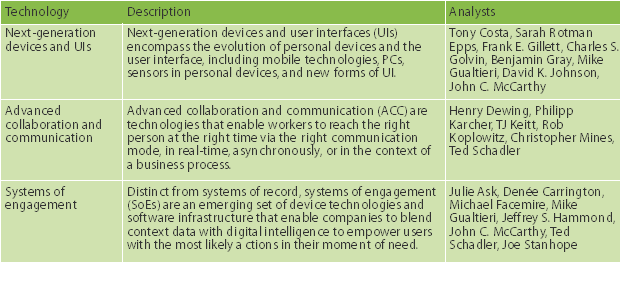
Sensors and remote computing technologies. These technologies enable more information collection and processing outside of data centers, extending the boundary of businesses’ digital realms:
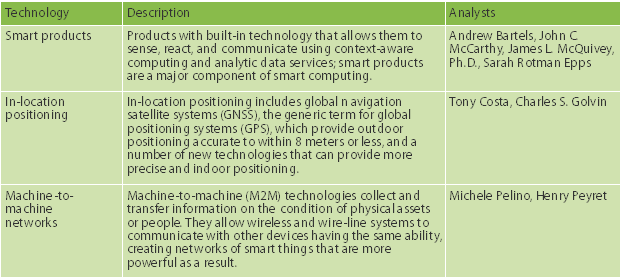
Process data management technologies. These emerging technologies add intelligence and adaptability to process management and enable more value from more data, more quickly and more cheaply.
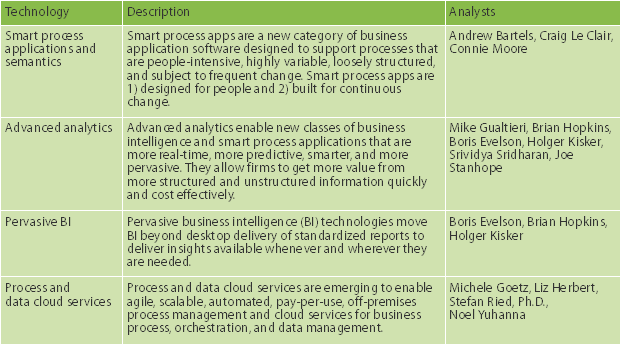
Infrastructure and application platforms. A wide range of innovations is happening at the infrastructure layer to create much more capable infrastructure and application platforms:
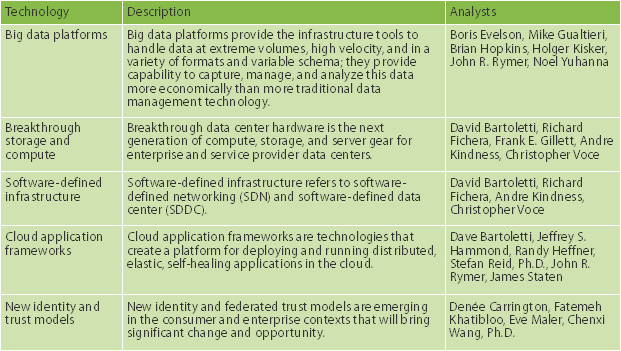
Many clients I speak to admit to getting blindsided by emerging technology opportunities or failing to avoid disruptive threats. They further admit that getting caught unaware hurts. Use this list as a basis for your investigation and technology watchlist.
Stay tuned for our emerging technology playbook; it will tell you how to best recognize the emerging technology capabilities that are right for you and make great decisions that help your firm navigate digital disruption.
